The Best Of Sergeant Tamora Jean Calhoun
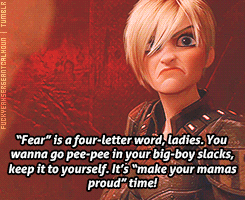


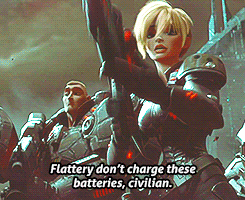


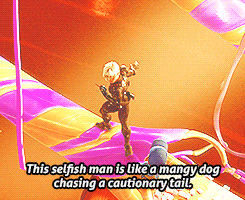

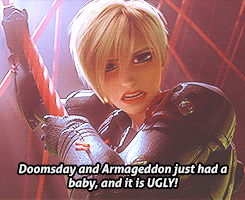
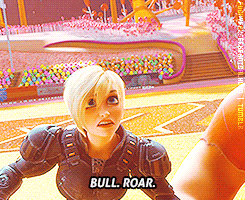
The Best of Sergeant Tamora Jean Calhoun
More Posts from Kangaroomaze and Others


Echidna warriors are inclined to let the youngsters in their tribe win small battles to encourage confidence. They are also inclined to humble those who boast too much confidence lol.
Inspired request by @/niyana-the-ambiguous-mobian
Video essay by Jellybox about what's good and bad about indie animation!
Wanted to share this in case it's helpful to anyone wanting to pursue making animation independently. It's also for fans of indie animation who may want some insight into how an indie studio works, why indie cartoons are always selling merch, why release schedules are often erratic, etc.
I also wanted to clarify the video's context, because it seems to have been somewhat misconstrued in some circles. Not long ago, WGA and SAG strikes, followed by TAG negotiations were very much in the news, shining light on the struggles the artists, writers, and actors in the Hollywood studio system are facing. In response, the words 'just go indie' have been tossed around quite a bit lately.
Gene and Sean at Jellybox approached us a few months back explaining that they were planning to make a video about the realities of running an indie studio/producing indie animation, largely in response to that 'just go indie' attitude. They were curious if we'd be willing to share our experience, including information about actual costs and the various difficulties and complications we've encountered. We said yes! We'd like for people to know what it's like. As much as it might look appealing next to the currently very broken studio system, indie has its own set of problems, and we think it's a good idea to be transparent about that because talking about problems is how you begin to address them.
Of course, while you get creative freedom and you have no shareholders to appease with indie production, the primary struggle you're always going to face is funding…and funding avenues are limited. Banks aren't eager to hand out business loans to freelance artists making cartoons, for instance. Social media algorithms reward frequent updates you can't swing with hand-drawn animated content, so you can't rely much on things like AdSense. You can't really insert sponsored ads into your animated videos without being too obtrusive. You can take on client work, but that interferes with your ability to focus on own animated project. Crowdfunds can be great for seed money, but they're also a ton of work to fulfill, and fulfillment itself will tend to eat up a considerable amount of the funds you've raised. Once your animation is produced, there is no well established way to sell the animated episode itself like there is for, say indie games sold on Steam. So, while we consider ways to try to make the terrain a bit more hospitable to indie creations, if nothing else, let this explain why productions rely a lot on merch drops!
-----------------
And hey, if you're an animation fan, consider supporting the independent productions you enjoy, whether you're tossing a few dollars their way, buying their merch, or just mentioning them to friends:
The Far-Fetched team is launching a crowdfund very soon to help them complete their pilot!

The Monkey Wrench team is killing it lately, and they deserve so much more fanfare than they've gotten!

And of course, thank you to the excellent folks at Jellybox for starting an important conversation!


ok hear me out
I kind of had this idea for a Mickey Mouse movie, so I sketched a poster: "The Backup Detectives" (kind of a temporary title or not)
So for the plot:
The story would start with some detectives that are too lazy to solve up a new case that just dropped by the office. The case itself looks too silly, the type to be a lot of work for nothing, with only one very sketchy clue to start. So, as a joke, they decided to call up "The Backup Detectives", a tasteless nickname that the office choose to name the four detectives that they've reduced to just some assistants. And these four who always wanted to really work on a case to help others and prove their worthy, clumsily start on this one. And what at first appears to be just a simple case, is definitely much more than it seems.
The film would take place somewhere between the 30s and 60s, with a few modern things here and there because disney magic. It would have some drama, mystery, and of course, comedy. With Mickey, Donald, Goofy and Oswald as the protagonists.


Uh
Baby (pickled)




Show, don’t tell
"Show, don’t tell" means letting readers experience a story through actions, senses, and dialogue instead of outright explaining things. Here are some practical tips to achieve that:
1. Use Sensory Details
Tell: "The room was cold."
Show: "Her breath puffed in faint clouds, and she shivered as frost clung to the edges of the window."
Tell: "He was scared."
Show: "His hands trembled, and his heart thudded so loudly he was sure they could hear it too."
2. Focus on Actions
Tell: "She was angry."
Show: "She slammed the mug onto the counter, coffee sloshing over the rim as her jaw clenched."
Tell: "He was exhausted."
Show: "He stumbled through the door, collapsing onto the couch without even bothering to remove his shoes."
3. Use Dialogue
What characters say and how they say it can reveal their emotions, intentions, or traits.
Tell: "She was worried about the storm."
Show: "Do you think it'll reach us?" she asked, her voice tight, her fingers twisting the hem of her shirt.
4. Show Internal Conflict Through Thoughts or Reactions
Tell: "He was jealous of his friend."
Show: "As his friend held up the trophy, he forced a smile, swallowing the bitter lump rising in his throat."
5. Describe the Environment to Reflect Mood
Use the setting to mirror or hint at emotions or themes.
Tell: "The town was eerie."
Show: "Empty streets stretched into the mist, and the only sound was the faint creak of a weathered sign swinging in the wind."
6. Let Readers Infer Through Context
Give enough clues for the reader to piece things together without spelling it out.
Tell: "The man was a thief."
Show: "He moved through the crowd, fingers brushing pockets, his hand darting away with a glint of gold."
7. Use Subtext in Interactions
What’s left unsaid can reveal as much as what’s spoken.
Tell: "They were uncomfortable around each other."
Show: "He avoided her eyes, pretending to study the painting on the wall. She smoothed her dress for the third time, her fingers fumbling with the hem."
8. Compare to Relatable Experiences
Use metaphors, similes, or comparisons to make an emotion or situation vivid.
Tell: "The mountain was huge."
Show: "The mountain loomed above them, its peak disappearing into the clouds, as if it pierced the heavens."
Practice Example:
Tell: "The village had been destroyed by the fire."
Show: "Charred beams jutted from the rubble like broken ribs, the acrid smell of ash lingering in the air. A child's shoe lay half-buried in the soot, its leather curled from the heat."

zoomies
some frames




in almost every other children's book where the main heroine is swept away to a land of whimsy she's shown having a lovely time; braving dangers occasionally, trying to find her way home, sure, but ultimately delighting in the magic around her. meanwhile alice spends her entire time in wonderland like
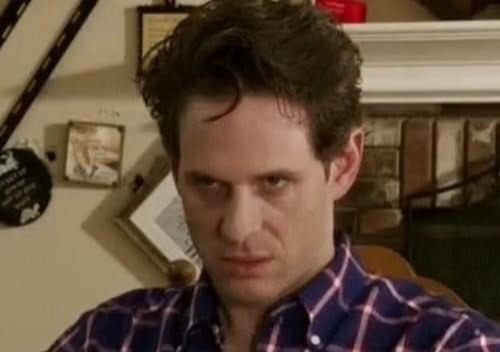




Bill Cipher VS Kirby
-
 thelegendarysourdough liked this · 4 weeks ago
thelegendarysourdough liked this · 4 weeks ago -
 complete-idiot-inc liked this · 1 month ago
complete-idiot-inc liked this · 1 month ago -
 flameless-pira liked this · 1 month ago
flameless-pira liked this · 1 month ago -
 nightbreakers reblogged this · 1 month ago
nightbreakers reblogged this · 1 month ago -
 iloveanimationyall reblogged this · 1 month ago
iloveanimationyall reblogged this · 1 month ago -
 thegreatmuldoon reblogged this · 1 month ago
thegreatmuldoon reblogged this · 1 month ago -
 thegreatmuldoon liked this · 1 month ago
thegreatmuldoon liked this · 1 month ago -
 steineishere liked this · 2 months ago
steineishere liked this · 2 months ago -
 allons-y-dang-it liked this · 3 months ago
allons-y-dang-it liked this · 3 months ago -
 runforallyoureworth liked this · 3 months ago
runforallyoureworth liked this · 3 months ago -
 clericofthebalance reblogged this · 3 months ago
clericofthebalance reblogged this · 3 months ago -
 clericofthebalance liked this · 3 months ago
clericofthebalance liked this · 3 months ago -
 positive-quo-vibes reblogged this · 3 months ago
positive-quo-vibes reblogged this · 3 months ago -
 0vergrownruins liked this · 3 months ago
0vergrownruins liked this · 3 months ago -
 randomsyhn reblogged this · 3 months ago
randomsyhn reblogged this · 3 months ago -
 randomsyhn liked this · 3 months ago
randomsyhn liked this · 3 months ago -
 exalteranima reblogged this · 3 months ago
exalteranima reblogged this · 3 months ago -
 draconicdervish liked this · 4 months ago
draconicdervish liked this · 4 months ago -
 reaper24sworld liked this · 4 months ago
reaper24sworld liked this · 4 months ago -
 iamjustafern liked this · 4 months ago
iamjustafern liked this · 4 months ago -
 cyndalyssa reblogged this · 4 months ago
cyndalyssa reblogged this · 4 months ago -
 kani-a3 reblogged this · 4 months ago
kani-a3 reblogged this · 4 months ago -
 sirmedicknight reblogged this · 4 months ago
sirmedicknight reblogged this · 4 months ago -
 one-clown-show liked this · 4 months ago
one-clown-show liked this · 4 months ago -
 sothisgameismultiplayer liked this · 4 months ago
sothisgameismultiplayer liked this · 4 months ago -
 lasatfat reblogged this · 4 months ago
lasatfat reblogged this · 4 months ago -
 honey-my-money liked this · 4 months ago
honey-my-money liked this · 4 months ago -
 luimnigh liked this · 4 months ago
luimnigh liked this · 4 months ago -
 justlurkingoverhere reblogged this · 4 months ago
justlurkingoverhere reblogged this · 4 months ago -
 top-hat-owl reblogged this · 4 months ago
top-hat-owl reblogged this · 4 months ago -
 top-hat-owl liked this · 4 months ago
top-hat-owl liked this · 4 months ago -
 venn364 reblogged this · 4 months ago
venn364 reblogged this · 4 months ago -
 pyxxie-nyxxie liked this · 4 months ago
pyxxie-nyxxie liked this · 4 months ago -
 writingpileofujomuttainnokas reblogged this · 4 months ago
writingpileofujomuttainnokas reblogged this · 4 months ago -
 fizzybuzz liked this · 4 months ago
fizzybuzz liked this · 4 months ago -
 stormikins liked this · 4 months ago
stormikins liked this · 4 months ago -
 beezlebuz liked this · 4 months ago
beezlebuz liked this · 4 months ago -
 scarytumbleweed liked this · 4 months ago
scarytumbleweed liked this · 4 months ago -
 thebloggingfox reblogged this · 4 months ago
thebloggingfox reblogged this · 4 months ago -
 makingshortstorieslong liked this · 4 months ago
makingshortstorieslong liked this · 4 months ago -
 yhmain reblogged this · 4 months ago
yhmain reblogged this · 4 months ago -
 caffeinatedcutie3 reblogged this · 4 months ago
caffeinatedcutie3 reblogged this · 4 months ago -
 caffeinatedcutie3 liked this · 4 months ago
caffeinatedcutie3 liked this · 4 months ago -
 yhmain liked this · 4 months ago
yhmain liked this · 4 months ago -
 ro-zden liked this · 4 months ago
ro-zden liked this · 4 months ago -
 ozpy11 reblogged this · 4 months ago
ozpy11 reblogged this · 4 months ago -
 hpysprkl liked this · 4 months ago
hpysprkl liked this · 4 months ago -
 muteswitch reblogged this · 4 months ago
muteswitch reblogged this · 4 months ago -
 muteswitch liked this · 4 months ago
muteswitch liked this · 4 months ago -
 relia-robot liked this · 4 months ago
relia-robot liked this · 4 months ago